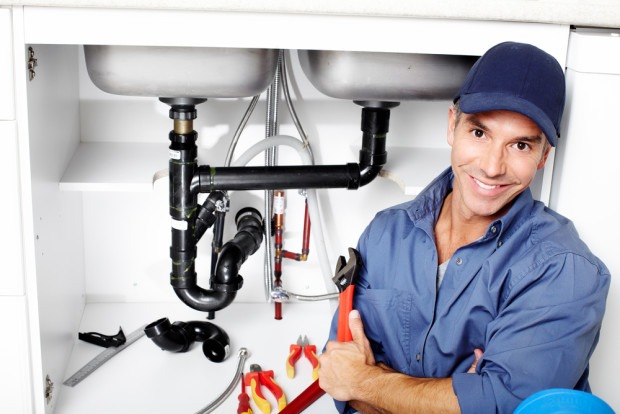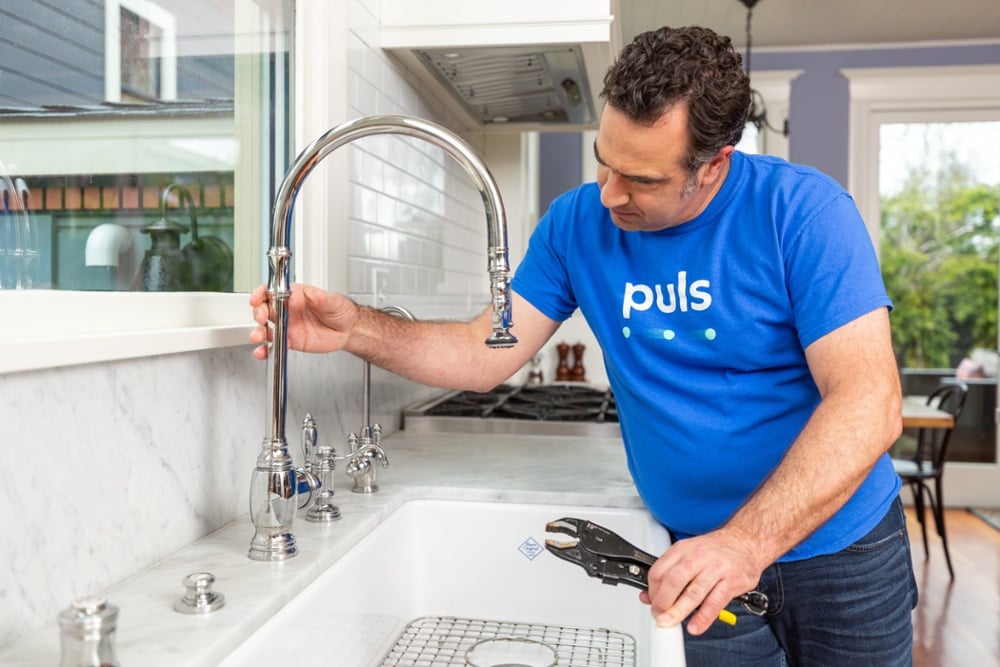Navigating Difficult Home Appliance Troubles: Just How Plumbers Can Save the Day
Navigating Difficult Home Appliance Troubles: Just How Plumbers Can Save the Day
Blog Article
On this page in the next paragraph you can locate a lot of quality guidance related to Why is My Home Making Strange Plumbing Noises.

To identify noisy plumbing, it is necessary to determine initial whether the unwanted audios happen on the system's inlet side-in other words, when water is transformed on-or on the drain side. Sounds on the inlet side have differed causes: too much water pressure, used valve and also tap parts, poorly linked pumps or various other appliances, improperly positioned pipe bolts, and plumbing runs having a lot of limited bends or various other limitations. Sounds on the drain side generally stem from bad area or, just like some inlet side sound, a layout consisting of limited bends.
Hissing
Hissing noise that happens when a tap is opened slightly normally signals too much water pressure. Consult your regional public utility if you think this issue; it will certainly be able to inform you the water stress in your area and can set up a pressurereducing shutoff on the inbound supply of water pipe if needed.
Various Other Inlet Side Noises
Creaking, squeaking, damaging, breaking, and tapping typically are brought on by the development or tightening of pipelines, generally copper ones supplying warm water. The noises occur as the pipelines slide against loose bolts or strike neighboring house framing. You can typically determine the area of the problem if the pipes are exposed; just comply with the noise when the pipelines are making sounds. Most likely you will find a loose pipeline wall mount or a location where pipelines exist so near floor joists or other framing pieces that they clatter against them. Connecting foam pipe insulation around the pipes at the point of call need to treat the problem. Be sure straps and hangers are secure as well as supply appropriate support. Where possible, pipe bolts need to be affixed to large architectural aspects such as foundation wall surfaces as opposed to to framing; doing so minimizes the transmission of vibrations from plumbing to surfaces that can magnify and transfer them. If affixing bolts to framing is unavoidable, wrap pipelines with insulation or various other resilient material where they speak to fasteners, and sandwich completions of brand-new bolts between rubber washing machines when mounting them.
Fixing plumbing runs that suffer from flow-restricting limited or various bends is a last hope that ought to be undertaken only after consulting a skilled plumbing service provider. Sadly, this situation is rather typical in older houses that might not have been constructed with indoor plumbing or that have actually seen a number of remodels, especially by beginners.
Chattering or Shrilling
Intense chattering or screeching that happens when a valve or tap is turned on, which normally disappears when the installation is opened totally, signals loose or malfunctioning interior components. The service is to change the valve or tap with a new one.
Pumps and also home appliances such as cleaning devices and also dishwashing machines can move motor sound to pipes if they are incorrectly connected. Link such things to plumbing with plastic or rubber hoses-never stiff pipe-to isolate them.
Drain Sound
On the drain side of plumbing, the principal objectives are to eliminate surfaces that can be struck by dropping or rushing water as well as to insulate pipes to have unavoidable noises.
In new building, bath tubs, shower stalls, toilets, as well as wallmounted sinks and also basins must be set on or versus durable underlayments to minimize the transmission of sound with them. Water-saving commodes and taps are less noisy than standard versions; install them rather than older kinds even if codes in your area still permit utilizing older components.
Drainpipes that do not run vertically to the cellar or that branch right into straight pipeline runs supported at floor joists or various other mounting present especially bothersome sound issues. Such pipelines are huge sufficient to emit considerable vibration; they likewise lug substantial amounts of water, which makes the circumstance even worse. In brand-new construction, specify cast-iron soil pipelines (the huge pipelines that drain pipes bathrooms) if you can manage them. Their enormity contains much of the noise made by water travelling through them. Additionally, avoid routing drainpipes in walls shown bed rooms as well as areas where individuals collect. Wall surfaces containing drainpipes ought to be soundproofed as was explained previously, utilizing double panels of sound-insulating fiber board and also wallboard. Pipelines themselves can be wrapped with special fiberglass insulation produced the purpose; such pipes have an invulnerable vinyl skin (in some cases containing lead). Results are not always acceptable.
Thudding
Thudding noise, frequently accompanied by shuddering pipes, when a faucet or appliance valve is turned off is a problem called water hammer. The sound and also resonance are brought on by the resounding wave of stress in the water, which unexpectedly has no area to go. Often opening a shutoff that releases water rapidly into a section of piping containing a restriction, joint, or tee installation can create the exact same condition.
Water hammer can usually be cured by mounting installations called air chambers or shock absorbers in the plumbing to which the issue valves or faucets are attached. These tools enable the shock wave produced by the halted flow of water to dissipate in the air they have, which (unlike water) is compressible.
Older plumbing systems might have short vertical areas of capped pipeline behind wall surfaces on faucet runs for the very same objective; these can ultimately fill with water, reducing or damaging their efficiency. The remedy is to drain the water supply totally by turning off the main water valve and opening up all faucets. Then open up the primary supply valve and also close the faucets one by one, beginning with the faucet nearest the shutoff as well as ending with the one farthest away.
WHY IS MY PLUMBING MAKING SO MUCH NOISE?
This noise indeed sounds like someone is banging a hammer against your pipes! It happens when a faucet is opened, allowed to run for a bit, then quickly shut — causing the rushing water to slam against the shut-off valve.
To remedy this, you’ll need to check and refill your air chamber. Air chambers are filled with — you guessed it — air and help absorb the shock of moving water (that comes to a sudden stop). Over time, these chambers can fill with water, making them less effective.
You’ll want to turn off your home’s water supply, then open ALL faucets (from the bathroom sink to outdoor hose bib) to drain your pipes. Then, turn the water back on and hopefully the noise stops! If you’re still hearing the sound, give us a call to examine further.
Whistles
Whistling sounds can be frustrating, as sometimes the source isn’t easily identified. However, if you can pinpoint which faucet or valve that may be the cause, you’ll likely encounter a worn gasket or washer — an easy fix if you replace the worn parts!Whistling sounds from elsewhere can mean a number of things — from high water pressure to mineral deposits. Your best plan of attack here is to give our plumbing experts a call. We’ll be able to determine where the noise is coming from and what the cause may be, then recommend an effective fix!
Cracks or Ticks
Cracking or ticking typically comes from hot water going through cold, copper pipes. This causes the copper to expand resulting in a cracking or ticking sound. Once the pipes stop expanding, the noise should stop as well.
Pro tip: you may want to lower the temperature of your water heater to see if that helps lessen the sound, or wrapping the pipe in insulation can also help muffle the noise.
Bangs
Bangs typically come from water pressure that’s too high. To test for high water pressure, get a pressure gauge and attach it to your faucet. Water pressure should be no higher than 80 psi (pounds per square inch) and also no lower than 40 psi. If you find a number greater than 80 psi, then you’ve found your problem!
Next step is to give us a call in order to install a pressure regulator. Trust us, you don’t want to wait to resolve this issue. Not only is the sound annoying, but high water pressure can be destructive to your home — including damaging certain appliances, like your washer and dishwasher.
Dripping
You might be accustom to the slow quiet drip your kitchen faucet makes. You might have even tuned out your bathroom sink dripping and drabbing all day long — but it’s time to find its cause.
A slow drip could signify a variety of easy to fix issues, such as a worn out O ring, or loose part. And by ignoring the drip, you could be wasting up to 2,000 gallons of water a year! So start conserving water — get it looked at ASAP.
https://www.pwessig.com/blog/2018/december/why-is-my-plumbing-making-so-much-noise-/

We are very serious about Why is My Home Making Strange Plumbing Noises and I hope you enjoyed reading the new piece. Appreciated our blog? Please share it. Help somebody else locate it. I praise you for your time. Come back soon.
Browse Website Report this page